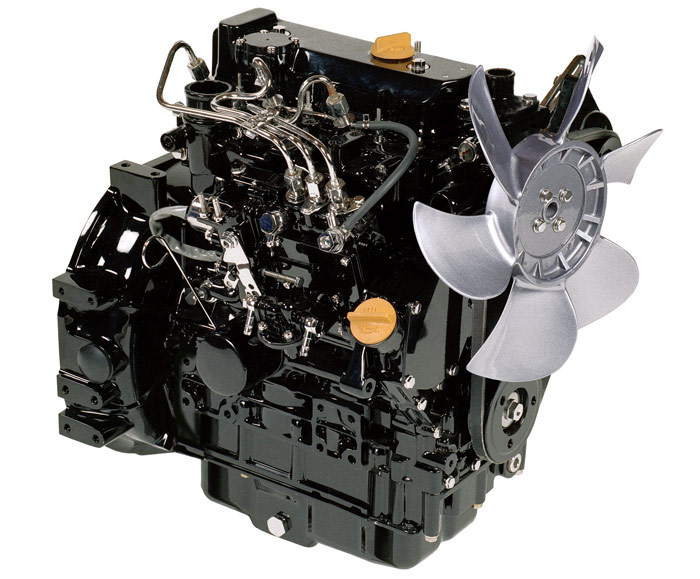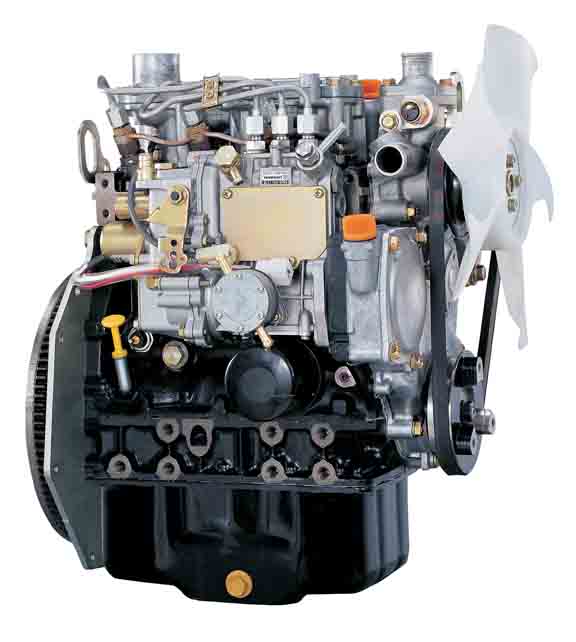- Rudolf Diesel
- Diesel basics
- Engine installation
- Basic troubleshooting
- Mechanical fuel systems
- Electronic management systems
- Cylinder heads and valves
- Engine mechanics
- Air systems
- Electrical fundamentals
- Starting and generating systems
- Cooling systems
- Greener diesels

There are several areas that have changed drastically during the last few years with diesel engines and will greatly affect the near future of diesel engine technologies. The highway trucking industry was the first to require these changes to meet federal EPA emissions guidelines for diesel engines back in the late 1980s. In the mid-1990s these same guidelines were required of the off-highway heavy equipment industry. Now even areas not affected in the past such as the marine, petroleum, and agricultural industries have come under these new requirements. They will change these industries in the same way they have previously changed the trucking and heavy equipment industries. During the last 20 years only certain engine horsepower sizes or industries have come under these federal guidelines. However, the 2007, 2010, and 2012 emissions guidelines will cover and affect all horsepower sizes and industries. Additionally, in most areas the current technologies to meet the 2007 guidelines won’t completely meet the 2010 and 2012 requirements without additional technological changes or improvements.

above: Yanmar 2 Cylinder, 4-Cycle, Liquid Cooled Diesel Engine
These technological changes are inevitable and future technician training needs will be a reality. This is where diesel engine course guides like Troubleshooting and Repairing Diesel Engines can help the technician stay current with these changing technologies. To show how rapidly these changes have taken place, information of some past and current examples of those areas affected are mentioned.
Since the inception of the EPA guidelines for diesel engines back in the 1980s, most major engine manufacturers have meant the following reductions. Engine particulates have been reduced by 90% and nitrous oxides by nearly 70%. Added to the equation in the 1990s was noise pollution, with reductions required in engine noise levels from 83 to 80 decibels. Although this doesn't seem like much, it’s equal to a 50% noise energy reduction. Add to that the effects of the reduction in fuel sulfur in diesel fuels from 5% to 0.5% to 0.05% (in ppm, 5000 to 500 to 50). Sulfur being the lubricating element in diesel fuels has required many changes to fuel system components.

above: Yanmar diesel engine (cut-away view)
The increased requirements to meet federal EPA emissions have made it extremely important to develop components that can survive these changes. The number of changes that have been made to diesel engines to meet these requirements would be too numerous to mention at this point. However, some of the more interesting areas that have greatly changed due to these requirements include lubrication requirements, fuel system components, and the use of electronic system controls and diagnostics. Those other areas not discussed here will be covered later in this guide.

above: Caterpillar C1.5 Industrial Diesel Engine
As the demands on the diesel engine have increased so have the requirements on such things as the oils and filters used to maintain these engines. Just 15 years ago we were teaching the needs of using American Petroleum Institute (API) categories CD, CE, and CF type oils. In just the last few years the demands placed on the diesel engine have caused the industry to develop new oils while moving through categories CG-4, CH-4, CI-4, and now CJ-4 oils.
Introduced in 1995, CG-4 was developed for severe duty, high-speed four-stroke engines using fuel with less than 0.5% sulfur. CH-4 was introduced in 1998 and CI-4 was introduced in 2002, also for high-speed four-stroke engines, to meet 1998 and 2002 exhaust emissions, respectively. CI-4 was also formulated for use with exhaust gas recirculation (EGR) systems. Introduced in 2006, CJ-4 is for high-speed four stroke engines to meet 2007 exhaust emissions. These oils are blended to meet the increased temperatures, speeds, and loads being placed on today's engines. The oils must also meet the needs to cool, cushion, clean, and protect, as well as hold dam aging fines and soot in solution until the oil is changed or the filter removes these damaging particles. In conjunction with the changes to the oil, filters are being required to be more efficient than ever before.

above: Caterpillar 3056 MARINE PROPULSION ENGINE
Developments in fuel systems design over the past 20 years have involved one of the largest number of changes to any single system on diesel engines. Fuel systems design has seen this area progress from the use of rotary-distribution-type pumps, used by many diesel engine manufacturers mostly on their smaller-size engines. Larger engines used some sort of pump-and-line-type system with fuel nozzles to provide the engine with high-pressure fuel delivery. As technologies improved, the individual fuel pump segment transformed into and was used in making the mechanical unit injector a reality. Improvements continued with the development of electronic unit injectors, and then hydraulically actuated electronic unit injectors. Now it seems that all of these changes and improvements to fuel system development have led us back to the use of an old technology, the very high-pressure common-rail fuel system design. All of these fuel systems are discussed in this guide.
As an instructor of electrical/electronic systems for the past 15 years I've witnessed the effect of this change on the diesel industry firsthand. The growth and usages along with changes in the area of electronics have allowed for many of the advancements that have taken place with diesel engines and was the only way to meet the EPA guidelines. The large numbers of advances in electronics have also meant that the amount and levels of training required by today's engine technician have increased dramatically.
What has this meant to those affected by the use of all these electronics? For the engineer, fewer moving parts will provide the ability to design systems to meet most of the requirements or demands placed upon them by the EPA or the individual customer. This flexibility allows the engine manufacturer the ability to make faster changes when design dictates. The customer gains the ability to make updates to programmable parameters to match changes in equipment demands. The technician, with help from ECM/ECUs, sensors, programmed software, and diagnostic tooling, can diagnose problems faster and more accurately. This results in an eventual savings for all, but especially to the customer, because overall reliability today has increased greatly and this affects down time and bottom line. Engines today are better than ever and have come a long way in helping to keep the environment clean.
Where is all of this change to engine technologies eventually going to take us? Even with all the advancements today in technology that will someday diagnose the problem and tell what part to change, we will always need the engine technicians to program the parameters, help diagnose the problem, change parts, and verify that the results fixed the original problem. There is already a big shortage of qualified and trained diesel technicians around the world. Additionally, the need is there to require training of potentially 50,000 to 100,000 diesel technicians by 2010. Being a diesel engine technician is a very demanding career and a career that is going to become more and more important in the future. The future challenges and potential rewards for the trained technician are going to create some very interesting situations within the industry in the very near future.
Also see: Two-Stroke Engine--Troubleshooting, Repair & Maintenance
Links:
Caterpillar industrial diesel engines
Prev. | Next
Home top of page